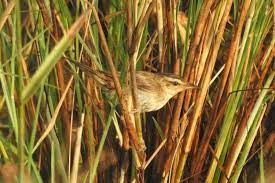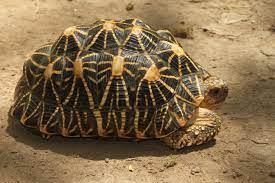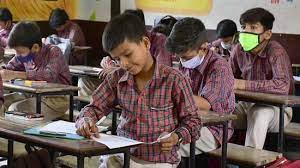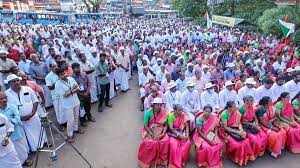Today’s Current Affairs: 20th January 2023 for UPSC IAS exams, State PSC exams, SSC CGL, State SSC, RRB, Railways, Banking Exam & IBPS, etc
Table of Contents
Application Supported By Blocked Amount: SEBI

The Securities and Exchange Board of India (Sebi) gave details of a proposed framework for shifting to a new payments system for secondary market trades.
- Application Supported by Blocked Amount (ASBA)process is developed by SEBI to apply for IPOs, Rights and Debts Issues, FPS and more.
- It entails that the amount to be paid for subscribing to the shares does not get debited from the investor’s account until the shares have been allotted by the company.
- Investors can apply for ASBA and have the bank block out the application money until the shares get allotted to the investor.
- This system will provide the authorization of the investor to subscribe only when the application is selected for the issue.
- This blocking is carried out by Self-Certified Syndicate Banks (SCSB).
- Upon the approval of the issue to the investor, the funds are paid accordingly.
- Self-Certified Syndicate Banks (SCSBs) are SEBI-authorized banks that conform to the conditions laid by SEBI to accept the applications, verify and block the amount to the extent of what the application requires, upload the details to the web and stay updated with the process until the shares are allotted.
- If the issue gets withdrawn, or the investor has not been allotted the shares, then SCSBs refund the money back to the investor’s account.
- Subscribing to issues via ASBA is a mandatory option since 2016.
- If the money has been blocked in an interest-bearing ASBA account then the amount will continue to earn interest during the time it takes to get the allotment of the share.
- The investor needs to be an Indian resident to avail of ASBA.
Sedge Warbler Spotted In The State Of Kerala:

Birders and ornithologists recently in the State of Kerala spotted a migratory bird the Sedge Warbler.
- The sedge warbler is a medium-sized warbler of marshes, reedbeds and wetlands that can be spotted singing from perches on reeds and willow bushes.
- The male sedge warbler introduces random phrases into its repertoire which is known for mimicking.
- The male warbler never sings the same song twice; he attracts more mates the more phrases his song has.
- These are insectivores in nature.
- Conservation status: IUCN Red List: Least concern
Indian Star Tortoise : Key Facts

A recent study on the Indian star tortoise distributed across South Asia has revealed that the genetic diversity of the species as well as its habitat has suffered major losses because of rampant illegal trade.
- The research report said the species is facing twin challenges of a threat to its habitat at one level and loss of its genetic diversity at the other.
- It calls for a proper conservation strategy to combat the fragmented distribution and explicitly recommends intensive genetic screening of founder individuals or isolated adult colonies by implementing scientific breeding.
Indian star tortoise:
- Indian star tortoise is found in the central and Southern parts of India, in West Pakistan and Sri Lanka.
- Conservation status:
- IUCN Status: Vulnerable
- Convention on International Trade in Species (CITES): Appendix I
- Wild Life Protection Act 1972: Schedule IV
- Threat: The highly fragmented habitat of the species, is greatly influenced by an increased level of urbanisation and agricultural practices throughout its range
Annual Status Of Education Report (ASER) 2022 : Highlights

The ASER Report 2022 released recently revealed that almost all (98.4%) students in the age bracket of 6-14 years are now enrolled in schools.
Highlights of ASER 2022:
- In ASER 2022 Survey, 7 lakh candidates from 19,060 schools in 616 districts were surveyed to calculate the learning outcomes post-pandemic on school children.
- Enrollment has gone from 97.2 per cent in 2018 to 98.4 per cent in 2022.
- As many as 72.9 per cent of the surveyed students go to government schools.
- In only three states, the number of girls not going to school is above 10% – Madhya Pradesh (17%), Uttar Pradesh (15%), and Chhattisgarh (11.2%).
- Nationally, children’s basic reading ability has dropped to pre-2012 levels, reversing the slow improvement achieved in the intervening years.
- In both government and private schools, only 20.5% students of Class 3 can read, compared to 27.3% in 2018.
- The proportion of Class 5 students who can read has dropped to 42.8% in 2022, compared to 50.5% in 2018.
ASER Survey:
- It is a citizen-led household survey that provides estimates of the enrolment status of children aged 3-16 and the basic reading and arithmetic levels of children aged 5-16 at the national, state and district level.
- ASER is published by NGO Pratham, and the survey has been conducted every year since 2005.
- The survey reaches children in the age group of 3-16 in almost all rural districts of India.
- It uses household rather than school-based sampling.
Etalin Hydropower Project:

The Forest Advisory Committee (FAC) has recently asked the Arunachal Pradesh Government to review the Etalin hydropower project.
- The FAC has recently asked the Arunachal Pradesh government to file a fresh proposal for forest diversion and the construction of the Etalin hydroelectric project (EHEP) due to non-compliance to conditions stipulated by the FAC and the overwhelming pushback against the project in the region.
Etalin Hydroelectric Project (EHEP):
- It is a 3,097 MW hydropower project planned in the Dibang Valley of Arunachal Pradesh.
- It is one of the largest hydropower projects proposed in the country in terms of installed capacity.
- EHEP is proposed to be developed as a combination of two run-of-the-river schemes.
- The project involves the construction of concrete gravity dams on the Tangon and Dri riverswhich are tributaries of Dibang river.
- The project area falls under the “richest bio-geographical province of the Himalayan zone” and “one of the mega biodiversity hotspots of the world”.
- The project area is dominated by indigenous population belonging to Idu-Mishmi tribes.
- Idu-Mishmi Tribe are the lone inhabitant tribe of Dibang Valley district, Arunachal Pradesh.
Bharat Pravah-India Along Its Shores Initiative:

The Ministry of Shipping, Waterways, and Ports has launched ‘Bharat Pravah-India along its Shores’, an initiative to highlight the significance and imagery of rivers, ports, and shipping in everyday life through a series of nationwide events.
- Kochi, Vizhinjam in Kerala and Galathea Bay ports in Andaman Nicobar Islands have made some headway in the direction of becoming full-fledged transhipment hubs.
- Bharat Pravah will serve as a common platform to bring together stakeholders from different walks for the purpose of creating a larger vision of shipping, rivers, seas & people.
- It will highlight the challenges, policy issues and future goals relating to the maritime sector.
- Themes:
- Rivers and Sea-Centric Development in India- the Historical lens.
- Sea, River, Ports and Ship in Folk Culture and Literature.
- Representation of Ports and Shipping in Popular Culture.
- Role of Shipping and Ports in India’s Development in the last 30 years.
- The Politics and Economy of Privatisation of Ports.
- Inland Waterways – Arteries of Growth, their Role and Significance.
- Greening Ports and Shipping Industry.
- Future of Ports and Shipping Industry- Management, Challenges and Policies.
Spot Bellied Eagle Owl : Spotted In Seshachalam Forest Of Andhra Pradesh

Spot Bellied Eagle Owl was recently spotted in Seshachalam forest of Andhra Pradesh for the first time.
Spot Bellied Eagle Owl:
- Scientific name: Bubo nipalensis
- Spot Bellied Eagle Owl is also known as the forest eagle-owl.
- They are large, very powerful and bold predatory birds.
- It measures about 50 to 65 cm in length and weighs 1500 to 1700 grams.
- It is a forest-inhabiting species found in India, Sri Lanka, Nepal, Bhutan, Bangladesh, Myanmar, China, Thailand, Laos, Cambodia and Vietnam.
- These species occur in altitudes from 300 to 3000 meters.
- Conservation:
- IUCN Status: Least Concern
- Wildlife (Protection) Act, 1972: Schedule IV
- CITES (Convention on International Trade in Endangered Species of Wild Fauna and Flora): Appendix II.
Seshachalam Hills:
- The Seshachalam Hills are a part of the Eastern Ghats in Andhra Pradesh.
- They are a group of seven hills namely, Seshadri, Neeladri, Garudadri, Anjanadri, Vrishabhadri, Narayanadri and Venkatadri.
Ecologically Sensitive Zones : Protests In Kerala

The creation of the Ecologically sensitive zones (ESZ) has sparked protests in Kerala and can be a hint of what is likely to occur in other parts of the country.
Eco Sensitive Zones:
- The National Wildlife Action Plan (2002-2016) of the Ministry of Environment, Forest and Climate Change (MoEFCC) stipulated that state governments should declare land falling within 10 km of the boundaries of national parks and wildlife sanctuaries as eco-fragile zones or Eco-Sensitive Zones (ESZs) under the Environmental (Protection) Act, 1986.
- While the 10-km rule is implemented as a general principle, the extent of its application can vary.
- Areas beyond 10 km can also be notified by the Union government as ESZs, if they hold larger ecologically important “sensitive corridors”.
- Activities Around ESZs:
- Prohibited Activities: Commercial mining, saw mills, industries causing pollution (air, water, soil, noise etc), establishment of major hydroelectric projects (HEP), commercial use of wood.
- Regulated Activities: Felling of trees, establishment of hotels and resorts, commercial use of natural water, erection of electrical cables, drastic change of agriculture system, e.g., adoption of heavy technology, pesticides etc, widening of roads.
- Permitted Activities: Ongoing agricultural or horticultural practices, rainwater harvesting, organic farming, use of renewable energy sources, adoption of green technology for all activities.
Technology For Air Quality Monitoring System:

Under the ‘National programme on Electronics and ICT applications in Agriculture and Environment (AgriEnIcs)’– the Centre for Development of Advanced Computing (C-DAC), in collaboration with TeXMIN, ISM, Dhanbad has developed an outdoor air quality monitoring station to monitor environmental pollutants.
- It will monitor parameters like PM 1.0, PM 2.5, PM 10.0, SO2, NO2, CO, O2, ambient temperature, relative humidity, etc., for continuous air quality analysis of the environment.
- The new Air Quality Monitoring System (AI-AQMS v1.0) will soon be available for a wider market as the new technology is already transferred to JM EnviroLab for further commercialization and deployment in different mining and cement industries.
- MeitY also launched the technology for biosensing systems for the detection of Endocrine Disrupting Chemicals in aquatic ecosystems (MEAN) for qualitative and quantitative analysis of EDC content in water bodies.
- Endocrine-disrupting chemicals (EDCs) are substances in the environment (natural– air, soil, or water) or manufactured (man-made) products that interfere with the normal function of the body’s endocrine system.
Sustainable Flight Demonstrator Project:

NASA and Boeing will partner in the development and flight test of a full-scale Transonic Truss-Braced Wing demonstrator aircraft under SFD project.
- The partnership aims to revolutionize the commercial aviation industry through a much more fuel-efficient design of narrow body airliners
- The project aims to engage with industry, academia, and other government organizations to identify, select, and mature key airframe technologies, such as new wing designs, that have a high probability of transition to the next generation single-aisle seat class airliner
- The project is one of the key components of the Sustainable Flight National Partnership
- NASA and Boeing will invest over $1 billion to build, test, and fly a full-scale demonstrator aircraft this decade
- The aircraft, currently known as the Sustainable Flight Demonstrator (SFD), will test the Transonic Truss-Braced Wing (TTBW) concept
- The TTBW concept involves a plane with extra-long, thin wings stabilized by diagonal struts, resulting in a more fuel-efficient aircraft
- The SFD aircraft is scheduled to fly in 2028.
- Transonic Truss-Braced Wing (TTBW) concept is a new design for a commercial aircraft that aims to revolutionize the aviation industry through a much more fuel-efficient design of narrow body airliners.
The Bhopal Declaration:

The Bhopal Declaration was released after a two-day meeting of Think-20 under G20 in Bhopal, Madhya Pradesh. The Declaration was made by more than 300 intellectuals from India and abroad
- The Think 20 (T20) is a forum of think tanks from G20 countries that provides policy recommendations to the leaders of the G20.
- It was created in 2012 to bring the expertise of think tanks from around the world to bear on the G20’s policy-making process, and it meets annually in the lead-up to the G20 summit
Bhopal Declaration:
- Emphasis on promoting traditional medicine systems like AYUSH
- Encouragement of value-oriented development in infrastructure
- Appeal for more inclusive development and care for all sections of society
- Special attention to children and development led by women
- Focus on bridging the gap between North and South
- Importance of localization in achieving G-20 sustainable development goals
- Necessity of triangular cooperation between government, society, and private organizations
Triangular cooperation:
- Triangular cooperation refers to a collaborative approach where three parties (typically government, private sector, and civil society) work together to achieve a common goal




